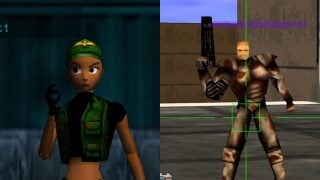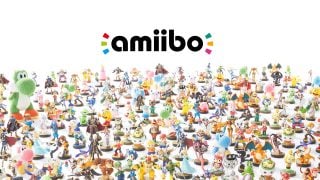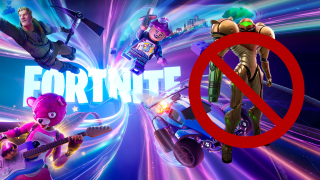Game Informer just released a treasure trove of Breath of the Wild details in its just-released March issue. With less than a month before the latest Zelda adventure is released on the Switch and the Wii U, we now have the most in-depth information about the the title than we’ve ever been given. We highly recommend picking up the March Game Informer issue to see some amazing new screenshots and get even more information.
Take a look below to see a summary of all of the juicy details. But be warned: Some fans might consider the information below to fall into spoiler territory.
Story
- Ties to previous entries are difficult to identify and spot unless you are diligent. (Think Temple of Time ruins linking back to Ocarina of Time). The story may be told more through subtle environmental clues (sort of like Metroid).
- Zelda is to be given a lot more emotion and expressions this time around, as depicted by the trailer.
- Zelda eventually gets mad at you and scolds you in the story. As to why is anyone’s guess.
- The open nature of the world extends to the narrative.
- It’s possible to view the ending without seeing all the story has to offer.
- Aonuma teases he’s been sitting on a new idea for narrative storytelling for 20+ years when he first started developing games. This supposedly streamlines the story to create a more cohesive experience. He says we’ll just have to experience the game for ourselves to find out.

Wii U vs. Switch
- Switch is the superior version. Higher resolution (in TV mode at least), faster loading and improved audio.
However, game experience is identical. - Frame rate is the same.
- Wii U version requires an install.
- Canceling the Wii U game was never considered.
- Shifting production to Switch actually helped tweak the game in important ways on both platforms (in relation to gameplay).
Horses and stables
- Stables exist in the world where Link can rest up and keep his horses.
- Merchants and other NPCs congregate at these stables.
- When Link opts to sleep at an Inn, he can spend a few extra Rupees to sleep in a premium bed. Sleeping in this bed allows Link to gain extra hearts when he wakes up. These hearts are displayed as yellow and do not regenerate after taking damage.
- Epona is not in the game, contrary to other reports and interviews.
- The stronger a horse is, the more difficult it is to tame.
- Once on a horse, Link must soothe it before it can become tame.
- Link needs to ride to a stable in order to name his horse and end the taming process.
- Link can own multiple horses at once.
- Feeding and taking care of your horses is necessary in order raise its stats.
- Horses can die and cannot be brought back to life.

Shrines
- Shrines act like mini dungeons, each having a core puzzle to solve.
- Most shrines have a second, more difficult puzzle to solve.
- Shrines will be marked complete or incomplete depending on what has been accomplished inside.
- Puzzles in shrines have several ways for a player to solve them.
Dungeons
- Dungeons can be tackled in any order.
- You can skip dungeons completely and go straight to Calamity Ganon.
- Sheikah Slate serves as a map; binoculars and other functions can be discovered at the game’s launch.
- Inserting the Sheikah Slate into certain slots within dungeons reveals the dungeon map, providing a 3D model of the layout.
- The Sheikah Slate features a symbol reminiscent of the Lens of Truth.
- In this featured dungeon, tilting the 3D model map shifts the entire dungeon around, opening new passages, entryways and locations to paraglide to.
- Tilting this specific dungeon seems key to solving many of its puzzles, shifting climbable blocks, ladders rolling bombs towards destructible walls are just a few examples.
- All bombs are remotely detonated throughout the game. They are never on a timer.
- Much more emphasis was placed on the fun of getting to dungeons than cramming the dungeons themselves with tons of puzzles and content. As a result, dungeons are much smaller and numerous than Zelda games post-Twilight Princess. (It’s sort of a return to form when dungeons weren’t so expansive and overwhelming.)
- Chests don’t have their signature opening animations and musical chime we’ve grown accustomed to over the years.
- No compasses are found in dungeons anymore, due to their smaller nature. It’s fairly straightforward where the goal is.
- Many bosses and enemies in the game represent the manifestations of Calamity Ganon’s evil.
- The dungeon showcased features a boss named Wind Blight Ganon, a monster without a face sporting a gun-like arm.
- Dungeons don’t feature new items to discover, nor are they needed to take down the boss.
- Bosses feature life meters.
- Multiple tactics can be used to take down bosses using standard combat mechanics. Seems ripe for experimentation.
Exploration
- Different shields allow Link to Snowboard faster or make controlling Link while snowboarding easier.
- Trees can be cut down to create bridges, be used for firewood, or just rolled around the world.
- Like other Zelda games, Skeletons appears at night. Attacking a Skeleton will cause it to fall apart. However, you must destroy its head in order to kill it.
- You can pick up the severed arm of an enemy and use it as a weapon.
- Players can place stamps on the world map to mark points of interest.
- Link can activate Sheikah Towers by using the Sheikah Slate. This causes a blue beam of light to shoot into the sky.
Guardians
- Guardians are scattered throughout the world– some smaller and less deadly, and some fully functional and incredibly difficult to beat.
- The Guardians are one of the biggest challenges in the game. They use techniques that make short work of Link.

Weaponry
- Nearly every enemy drops its weapon, which can then be used by the player. A system more in line with modern RPGs.
Development of the Wild
- Breath of the Wild has been under development for more than four years.
- It was the most difficult Zelda game to make, according to Aonuma.
- The game re-examines the series’ highly successful structure and rethinks it in radical new ways.
Source: GameInformer
Leave a Comment


